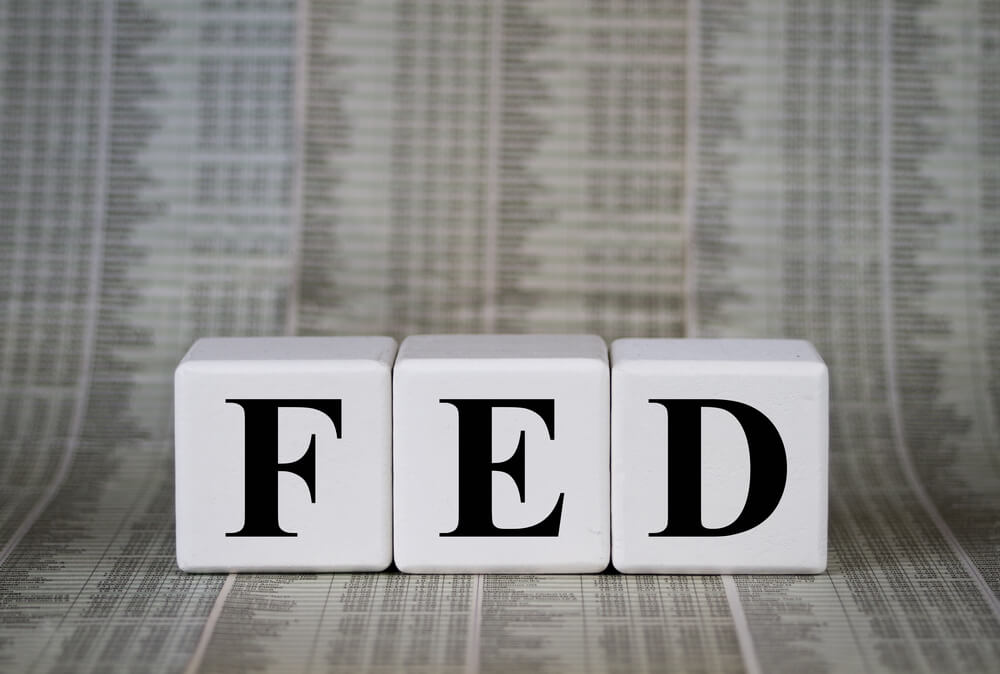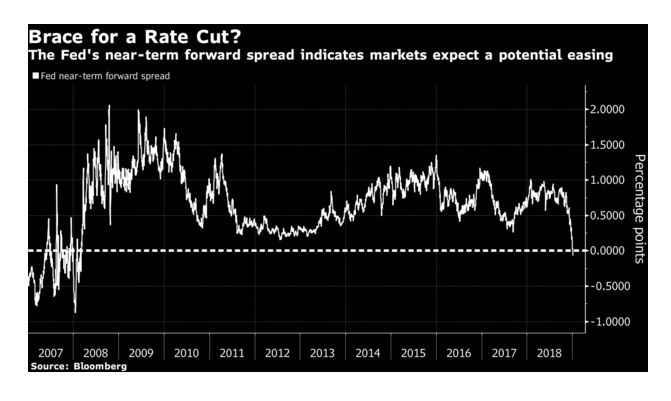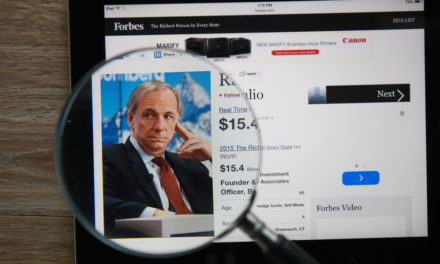The Federal Reserve raised its benchmark interest rate four times in 2018 and has previously hinted to at least two more increases in 2019.
“This is a crystal ball, it’s telling you about the future and what the market thinks of the Fed and what it will do with its policy rate. The market is predicting a rate cut at the beginning part of next year.”
But is the market signaling an actual rate cut? Some of the most accurate gauges of economic health seem to think so.
Per Bloomberg:
The little-known near-term forward spread, which reflects the difference between the forward rate implied by Treasury bills six quarters from now and the current three-month yield, fell into negative territory on Wednesday for the first time since March 2008. Two-year yields dipped below those on one-year paper in December.
“This is a crystal ball, it’s telling you about the future and what the market thinks of the Fed and what it will do with its policy rate,” Tony Crescenzi, market strategist and portfolio manager at Pimco, said in an interview with Bloomberg TV. “The market is predicting a rate cut at the beginning part of next year.”
Federal Reserve economists said looking at forward rates relative to those on current Treasury bills has served traders well in the past.
“When market participants expected — and priced in — a monetary policy easing over the next 18 months, their fears were validated more often than not,” Eric C. Engstrom and Steven A. Sharpe wrote in a research paperdated July 2018.
When the near-term forward spread turns negative, it indicates bets on easier policy “over the next several quarters, presumably because they expect monetary policymakers to respond to the threat or onset of a recession,” they wrote.
Money markets have been paring back expectations of rate hikes as economic data weaken and equities whipsaw. Last week, traders priced in no move in the Federal Funds rate this year and more than a 50 percent chance of a rate cut in 2020.
“We won’t be roaring into the 20s like we did a hundred years ago, we could be stumbling into the 20s, is what the market is saying,” said Pimco’s Crescenzi.





